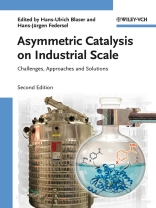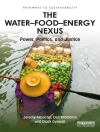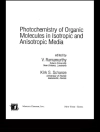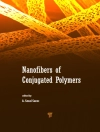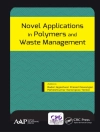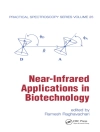This second edition of the pioneering work on this hot topic captures the major trends and latest achievements in the art of asymmetric catalysis on an industrial scale. A number of completely new real-life case studies written by the world leaders in their respective areas provide a compact and qualified insight into this developing field. The resulting ready reference and handbook collates first-hand and valuable information within a context where it can be easily found.
The high-quality contributions illustrate the relevant environments and situations, such as time pressure, how the catalytic step fits into the overall synthesis, or competition with other synthetic approaches, as well as the typical problems encountered in the various phases, including finding/developing the catalyst and optimization of the process or choice of equipment. Both successful and unsuccessful approaches to solve these problems are described.
Tabela de Conteúdo
PART I: New Processes for Existing Active Compounds (APIs)
SOME RECENT EXAMPLES IN DEVELOPING BIOCATALYTIC PHARMACEUTICAL PROCESSES
Introduction
Levetiracetam (Keppra?)
Atorvastatin (Lipitor?)
Pregabalin (Lyrica?)
Conclusion
ENANTIOSELECTIVE HYDROGENATION: APPLICATIONS IN PROCESS R&D OF PHARMACEUTICALS
Introduction
Carbonyl Hydrogenations
Imine Hydrogenation
Conclusion
CHIRAL LACTONES BY ASYMMETRIC HYDROGENATION –
A STEP FORWARD IN (+)-BIOTIN PRODUCTION
Introduction: (+)-Biotin as an Example for the Industrial Production of Vitamins
Commercial Syntheses and Other Routes to (+)-Biotin by Total Synthesis
Catalytic Asymmetric Reduction of Cyclic Anhydride to D-Lactone
Conclusion
BIOCATALYTIC ASYMMETRIC OXIDATION FOR THE PRODUCTION OF BICYCLIC PROLINE PEPTIDOMIMETICS
Introduction
Development of Routes to 1 and 2
Asymmetric Biocatalytic Amine Oxidation
Enzyme Evolution –
Current State of the Art
Amine Oxidase Evolution
Chemical Development
Optimization of Cyanation
Conclusion
THE ASYMMETRIC REDUCTION OF HETEROCYCLIC KETONES –
A KEY STEP IN THE SYNTHESIS OF POTASSIUM-COMPETITIVE ACID BLOCKERS (P-CABs)
Potassium-Competitive Acid Blockers –
A New Option for the Treatment of Acid-Related Diseases
Discovery and Development of 7H-8, 9-Dihydropyrano[2, 3-c]imidazo[1, 2-a]pyridines as Potassium-Competitive Acid Blockers
Noyori-Type Catalysts for the Asymmetric Reduction of Prochiral Ketones
Research Overview
Asymmtric Reduction of Ketones Bearing the Imidazo[1, 2-a]pyridine Skeleton
Asymmetric Reduction of Ketones Bearing the 3, 6, 7, 8-Tetrahydrochromenol[7, 8-d]imidazole Skeleton
Large-Scale Asymmetric Synthesis of the 3, 6, 7, 8-Tetrahydrochromeno[7, 8-d]imidazole BYK 405879
Conclusions
PART II: Processes for Important Building Blocks
APPLICATION OF A MULTIPLE-ENZYME SYSTEM FOR CHIRAL ALCOHOL PRODUCTION
Introduction
Construction of an Enzymatic Reduction System
Enzymatic Stereoinversion System
CHEMOENZYMATIC ROUTE TO THE SIDE-CHAIN OF ROSUVASTATIN
Introduction
Route Selection
Process Development
Conclusion
ASYMMETRIC HYDROGENATION OF A 2-ISOPROPYLCINNAMIC ACID DERIVATIVE EN ROUTE TO THE BLOOD PRESSURE-LOWERING AGENT ALISKIREN
Introduction
Development of Monodentate Phosphoramidites as Ligands for Asymmetric Hydrogenation
Instant Ligand Libraries of Monodentate BINOL-Based Phosphoramidites
Aliskiren
High-Throughput Screening in Search of a Cheap Phosphoramidite Ligand
Mixtures of Ligands
Further Screening of Conditions
Validation and Pilot Plant Run
Instant Ligand Library Screening to Further Optimize Rate and ee
Validations
Recent Developments in the Asymmetric Hydrogenation of 3
Conclusion
ASYMMETRIC PHASE-TRANSFER CATALYSIS FOR THE PRODUCTION OF NON-PROTEINOGENIC ALPHA-AMINO ACIDS
Background
Designer’s Chiral Phase-Transfer Catalysts
Cynthesis of the C2-Symmetric Chiral Mono-1, 1′-Binaphthyl-Derived Catalyst
Application of Enantiomers of 21 to the Industrial Production of NPAAs
Conclusion
DEVELOPMENT OF EFFICIENT TECHNICAL PROCESSES FOR THE PRODUCTION OF ENANTIOPURE AMINO ALCOHOLS IN THE PHARMACEUTICAL INDUSTRY
Introduction
Phenylephrine
Adrenaline (Epinephrine)
Lobeline
Availability of the Catalyst
General Remarks on the Development of Industrial Processes for Asymmetric Hydrogenation
THE ASYMMETRIC HYDROGENATION OF ENONES –
ACCESS TO A NEW L-MENTHOL SYNTHESIS
Introduction
Screening of Metal Complexes, Conditions, and Ligands
Scale-Up and Mechanistic Work
Catalyst Recycling and Continuous Processing
Conclusion
ELIMINATING BARRIERS IN LARGE-SCALE ASYMMETRIC SYNTHESIS
Introduction
Improvement of the Synthetic Route to Biaryl Ligands
Development of an Efficient Process En Route to Unprotected Beta-Amino Acids
Conclusion
CATALYTIC ASYMMETRIC RING OPENING: A TRANSFER FROM ACADEMIA TO INDUSTRY
Introduction
Catalyst Preparation and Initial Optimization
Further Optimization
Process Adaptation
Protecting Group Adaption
Use of Benzoate as O-Nucleophile
Chemical Elaboration
Conclusion
ASYMMETRIC BAEYER-VILLIGER REACTIONS USING WHOLE-CELL BIOCATALYSTS
Introduction
Chemistry
Biocatalysts
Process Screening and Design
Downstream Processing
Future Process Developments
Perspective
LARGE-SCALE APPLICATIONS OF HYDROLASES IN BIOCATALYTIC ASYMMETRIC SYNTHESIS
Introduction
Chemistry
Biocatalyst
Process Screening and Design
Downstream Processing and Purification
Future Process Developments
Perspectives
SCALE-UP STUDIES IN ASYMMETRIC TRANSFER HYDROGENATION
Background
Reaction Components
Case Studies
Conclusions
2, 2′, 5, 5′-TETRAMETHYL-4, 4′-BIS(DIPHENYLPHOSHINO)-3, 3′-BITHIOPHENE: A VERY EFFICIENT CHIRAL LIGAND FOR RU-CATALYZED ASYMMETRIC HYDROGENATIONS ON THE MULTI-KILOGRAMS SCALE
Introduction
Case Histories
Conclusion
THE POWER OF WHOLE-CELL REACTION: EFFICIENT PRODUCTION OF HYDROPYROLINE, SUGAR NUCLEOTIDES, OLIGOSACCHARIDES, AND DIPEPTIDES
Introduction
Production of Hydroxyproline by Asymmetric Hydroxylation of L-Proline
Oligosaccharide Production by Bacterial Coupling
Dipeptide Production Systems
Conclusion and Perspective
ENANTIOSELECTIVE KETONE HYDROGENATION: FROM RESEARCH TO PILOT SCALE WITH INDUSTRIALLY VIABLE RU/PHOSPHINE-OXAZOLINE) COMPLEXES
Introduction
Ligand Screening and Optimization of the Reaction Conditions
Quality Risks
Health and Safety
Catalyst Removal
Final Process
PART III: Processes for New Chemical Entities (NCEs)
ENABLING ASYMMETRIC HYDROGENATION FOR THE DESIGN OF EFFICIENT SYNTHESIS OF DRUG SUBSTANCES
Introduction
Laropiprant
Taranabant
Sitagliptin
Conclusions and Outlook
SCALE-UP OF A TELESCOPED ENZYMATIC HYDROLYSIS PROCESS FOR AN INTERMEDIATE IN THE SYNTHESIS OF A FACTOR Xa INHIBITOR
Introduction
The Discovery Chemistry Synthesis
Optimization and Multi-Kilogram Supply of Monoacid (R, R)-2
Process Development of the N-Boc Approach
Scalable Enzymatic Monohydrolysis of the Diester (R, R)-1
Production –
Experimental Part
Evaluation of an Enzymatic Alternative –
The N-Difluoroethyl Approach
Discussion
AN EFFICIENT, ASYMMETRIC SYNTHESIS OF ODANACATIB, A SELECTIVE INHIBITOR OF CATHEPSIN K FOR THE TREATMENT OF OSTEOPOROSIS, USING AN ENZYME-MEDIATED DYNAMIC KINETIC RESOLUTION
Introduction
Fluoroleucine Synthesis Strategy
First-Generation Enzymatic Dynamic Kinetic Resolution: Batch Process
Development of Enzymatic Dynamic Kinetic Resolution: Towards a Manufacturing Process
Pilot Plant Runs
Conclusion
BIOCATALYTIC ROUTES TO THE GPIIb/IIIa ANTAGONIST LOTRAFIBAN, SB 214857
Introduction
The Medicinal Chemistry Route of Synthesis
The First Biocatalytic Route –
A Late-Stage Resolution
Early-Stage Resolution
Catalase for the Removal of Iodide
Other Synthetic Strategies to Chiral Lotrafiban Intermediates
The End Game
DISCOVERY AND DEVELOPMENT OF A CATALYTIC ASYMMETRIC CONJUGATE ADDITION TO KETOESTERS TO NITROALKENES AND ITS USE IN THE LARGE-SCALE PREPARATION OF ABT-546
Introduction
Retrosynthetic Analysis of ABT-546
Early Asymmetric Syntheses
Synthesis of the Reaction Partners
Discovery of the Asymmetric Conjugate Addition Reaction
Completion of the Synthesis of ABT-546
Extension to Other Reaction Partners
Conclusion
THE KAGAN OXIDATION –
INDUSTRIAL-SCALE ASYMMETRIC SULFOXIDATIONS IN THE SYNTHESIS OF TWO RELATED NK1/NK2 ANTAGONISTS
Introduction
Background and Introduction to ZD7944
Introduction to the ZD7944 CBz Sulfoxide Stage
Process Development of ZD7944 CBz Sulfoxide
Additional Investigations in the Development of ZD7944 CBz Sulfoxide
The Impact of Other Stages on the ZD7944 CBz Sulfoxide Process
Summary of ZD7944
Background and Introduction to ZD2249
Process Development of ZD2249 CBz Sulfoxide
Summary of ZD2249
Comparison and Conclusion
LARGE-SCALE APPLICATION OF ASYMMETRIC PHASE-TRANSFER CATALYSIS FOR AMINO ACID SYNTHESIS
Introduction
Initial Strategy
Synthesis of 4, 4′-Difluorobenzylhydryl Bromide
Initial Studies and Optimization
Scale-Up of the PTC Alkylation
Conclusion
Experimental
APPLICATION OF PHASE-TRANSFER CATALYSIS IN THE ORGANOCATALYTIC ASYMMETRIC SYNTHESIS OF AN ESTROGEN RECEPTOR BETA-SELECTIVE AGONIST
Introduction
Medicinal Chemistry Synthesis and Revised Synthetic Plan
Preparation of the Phase-Transfer Substrate 11
Asymmetric Phase-Transfer Michael Addition
Ether Cleavage, Cyclization, and Chlorination
Conclusion
ASYMMETRIC SYNTHESIS OF HCVAND HPV DRUG CANDIDATES ON SCALE: THE CHOICE BETWEEN ENANTIOSELECTIVE AND DIASTEREOSELECTIVE SYNTHESES
Introduction
GSK260983A (1) for the HPV
GSK873082X (2) for the HCV
Conclusion
Sobre o autor
Hans-Ulrich Blaser carried out his doctoral research with A. Eschenmoser at the Federal Institute of Technology (ETH) Zurich, where he received the Ph.D. degree in 1971. Between 1971 and 1975 he held postdoctoral positions at the University of Chicago (J. Halpern), Harvard University (J.A. Osborn), and Monsanto (Zurich). During 20 years at Ciba-Geigy (1976-1996) he gained practical experience at R&D in the fine chemicals and pharmaceutical industry, which continued at Novartis (1996-1999) and at Solvias where he presently is chief technology officer.
Hans-Jurgen Federsel is a renowned specialist in the field of process R&D with a professional career spanning over 30 years. Starting off as bench chemist in Astra at the major Swedish site in Sodertalje, he climbed the ranks to occupy positions both as line and project manager. After the merger that formed Astra Zeneca, he became Head of Projects Management at the aforementioned location and was then appointed to the newly created role as Director of Science in Global Process R&D in 2004. In connection with this, he was also given the prestigious title Senior Principal Scienstist. His strong academic links have been further developed over the years after obtaining the Ph D in Organic Chemistry at the Royal Institute of Technology in Stockholm, which was led to his being awarded an Associate Professorship there.
His long-lasting links to this Institute has brought him a seat on the Board of the School of Chemical Science and Engineering from 2005. Publishing in peer reviewed journals and books and frequent lecturing has rendered fame to his name that goes far beyond the limits of the own company and Dr. Federsel enjoys invitations from all over the world to share learning and experience from his broad knowledge base on process R&D. In 2009 he was elected to the Royal Swedish Academy of Engineering Sciences (IVA).
